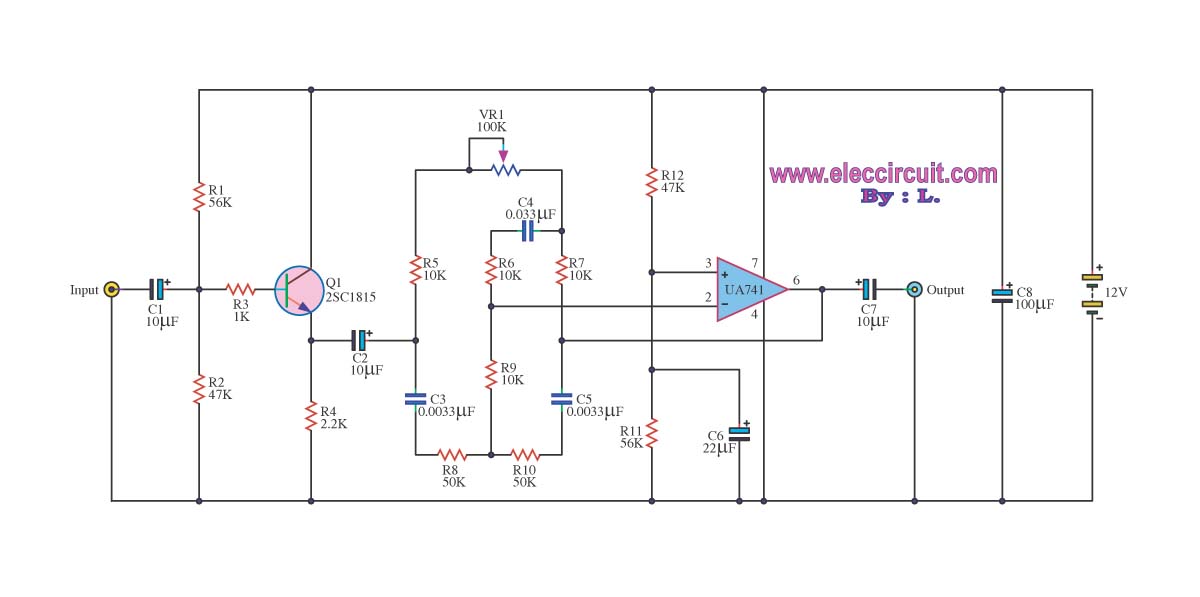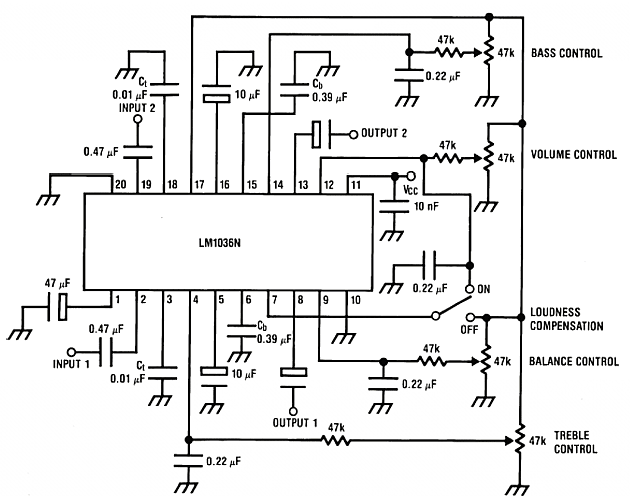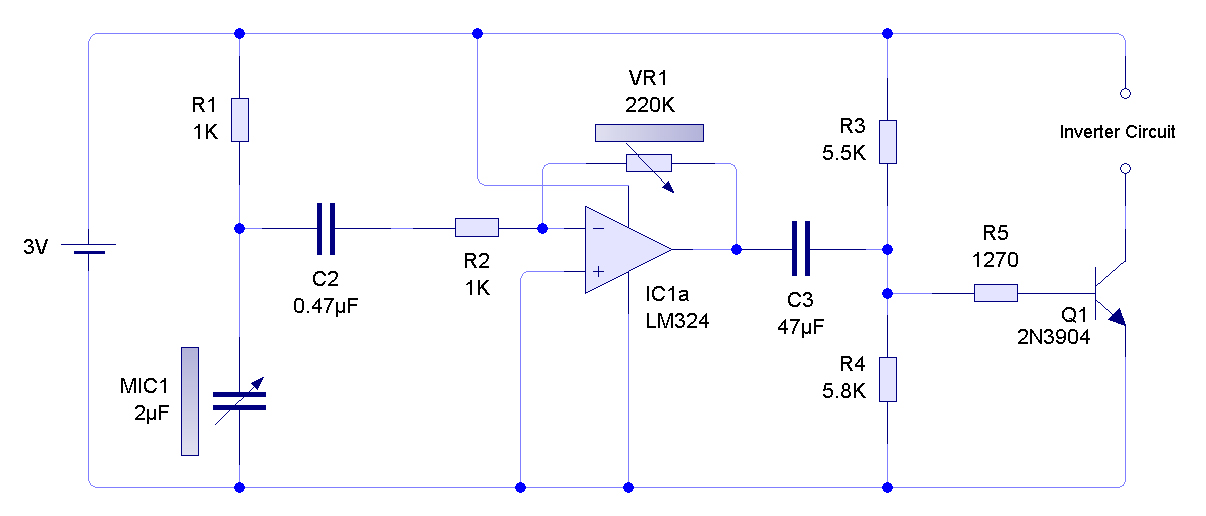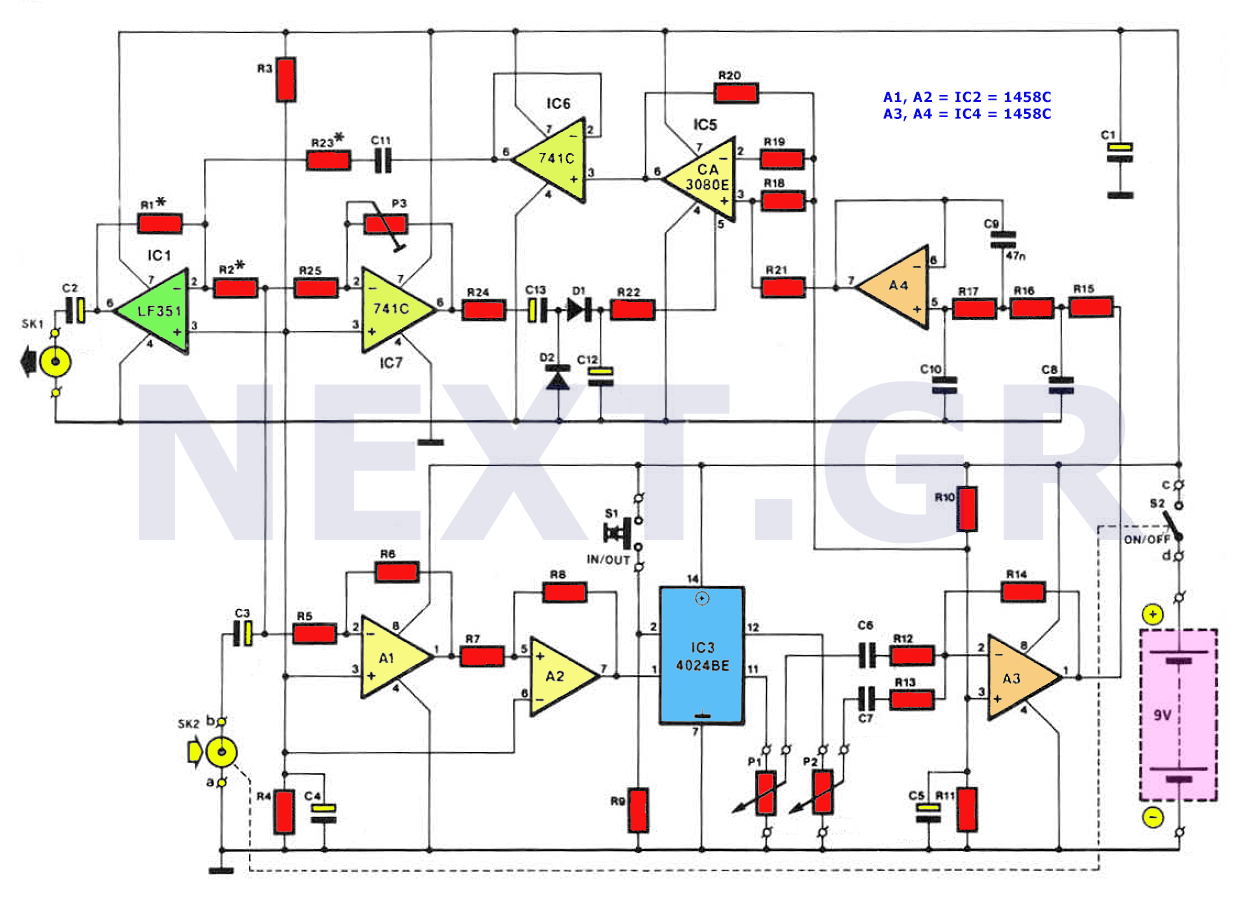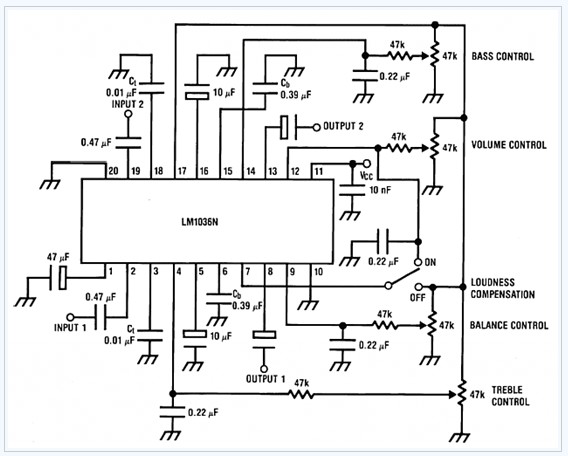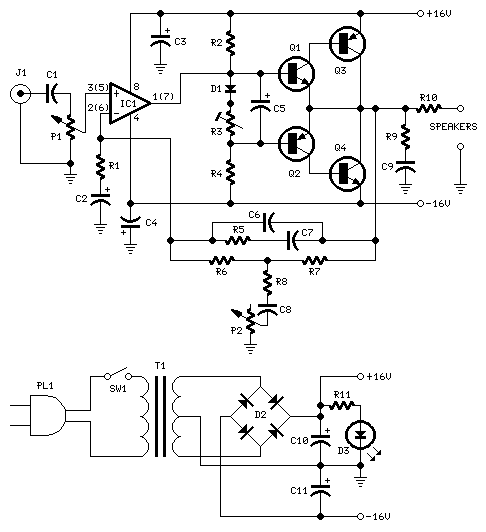
Turbo Bass (Booster)
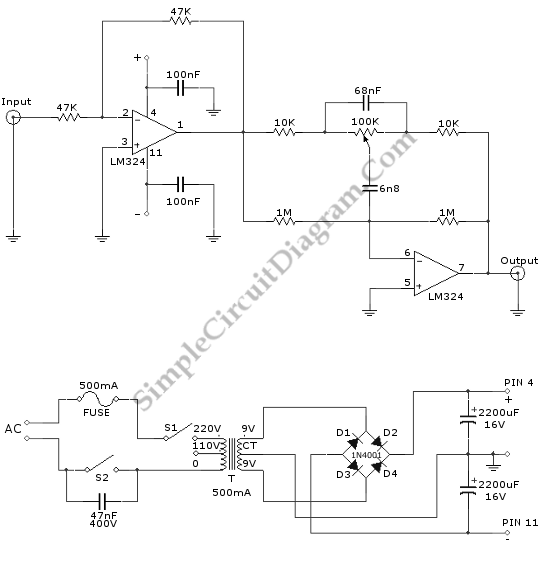
This is a Turbo Bass circuit. Using this circuit, low-frequency sound signals (bass) can be amplified. This circuit is an active circuit. The first op-amp...
The Turbo Bass circuit is designed to enhance low-frequency audio signals, specifically targeting the bass range to provide a richer sound experience. The circuit utilizes an operational amplifier (op-amp) as its core component, which allows for the amplification of audio signals with precision and efficiency.
The design typically begins with an input stage where the audio signal is fed into the first op-amp. This op-amp is configured in a non-inverting amplifier mode, which ensures that the phase of the audio signal remains unchanged while it is amplified. The gain of this stage can be adjusted by varying the feedback resistors, allowing for customization based on the desired output level.
Following the initial amplification, the circuit may include additional filtering components, such as capacitors and inductors, to shape the frequency response. These components serve to eliminate unwanted high-frequency noise and enhance the desired bass frequencies. A low-pass filter configuration is commonly employed to ensure that only the low-frequency signals pass through, effectively boosting the bass response.
The output of the circuit can be connected to a speaker or an audio processing system. It is essential to ensure that the output stage is capable of driving the load without distortion, which may require a buffer stage or additional amplification depending on the specific application.
Overall, the Turbo Bass circuit is an effective solution for audio applications where enhanced bass response is desired, making it suitable for use in home theater systems, musical instruments, and various audio playback devices. Proper design considerations, including component selection and circuit layout, are critical to achieving optimal performance and sound quality.This is a Turbo Bass circuit. Using this circuit, the low frequency sound signals(bass) can be multiplied. This circuit is an active circuit. The first op-amp.. 🔗 External reference
The Turbo Bass circuit is designed to enhance low-frequency audio signals, specifically targeting the bass range to provide a richer sound experience. The circuit utilizes an operational amplifier (op-amp) as its core component, which allows for the amplification of audio signals with precision and efficiency.
The design typically begins with an input stage where the audio signal is fed into the first op-amp. This op-amp is configured in a non-inverting amplifier mode, which ensures that the phase of the audio signal remains unchanged while it is amplified. The gain of this stage can be adjusted by varying the feedback resistors, allowing for customization based on the desired output level.
Following the initial amplification, the circuit may include additional filtering components, such as capacitors and inductors, to shape the frequency response. These components serve to eliminate unwanted high-frequency noise and enhance the desired bass frequencies. A low-pass filter configuration is commonly employed to ensure that only the low-frequency signals pass through, effectively boosting the bass response.
The output of the circuit can be connected to a speaker or an audio processing system. It is essential to ensure that the output stage is capable of driving the load without distortion, which may require a buffer stage or additional amplification depending on the specific application.
Overall, the Turbo Bass circuit is an effective solution for audio applications where enhanced bass response is desired, making it suitable for use in home theater systems, musical instruments, and various audio playback devices. Proper design considerations, including component selection and circuit layout, are critical to achieving optimal performance and sound quality.This is a Turbo Bass circuit. Using this circuit, the low frequency sound signals(bass) can be multiplied. This circuit is an active circuit. The first op-amp.. 🔗 External reference
